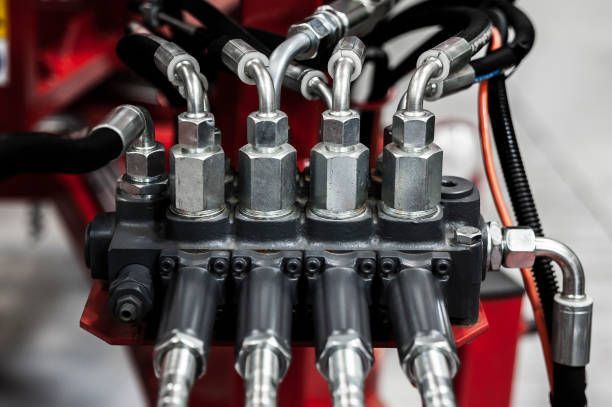Hydraulic Operation: What Function Does Hydraulic Fluid Serve?
Your hydraulic pump - or any other hydraulic-based system - can't function properly without hydraulic fluid. The fluid is incompressible, an ideal property for energy transfer by hydraulic systems.
When a hydraulic system is in operation, hydraulic fluid is pumped from the system reservoir to the other hydraulic components. The fluid needs to meet certain requirements for your system to enjoy better efficiency. Learn more about hydraulic fluid and its most important operational characteristics.
Why is Hydraulic Fluid Important?
For modern hydraulic systems, pressure and temperature are among the most important operational elements. Thus, your choice of hydraulic fluid should meet these requirements.
Hydraulic fluid is mainly a medium for energy transfer. However, the fluid has other equally important functions. These other functions rely on your hydraulic fluid's characteristics, some of which are realized by adding additives. With additives, fluids can be designed to perform the following functions better.
Heat Transfer
A hydraulic pump generates large amounts of pressure to help move hydraulic fluid through the various machine components. Pressure is critical in the regular operation of a hydraulic pump system, but it can create a lot of heat. This heat comes from the friction generated as fluid molecules brush against machine components.
Unfortunately, too much heat can damage your hydraulic pump. The hydraulic fluid distributes the generated heat across the system to help reduce the heat intensity. The hydraulic fluid then enters a cooling mechanism that takes away the excess heat. But if your system generates less heat, the reservoir can double as a dissipation mechanism that releases the pent-up heat.
On the other hand, hydraulic fluid can become too cold when you operate your pump in cold temperatures. You can combine your pump with an external heater, which in turn warms up your hydraulic fluid. In doing so, the fluid keeps your system within the rated temperature limits and prevents damage.
Lubrication
Hydraulic components work under intense pressure. Therefore, these elements are susceptible to frictional wear and tear.
Hydraulic liquid lubricates the moving internal parts of a hydraulic system, such as the valve plate and piston slippers. Without sufficient lubrication, your hydraulic pump can only serve you for a short while before malfunctioning.
To effectively lubricate your pump's internal components, the hydraulic oil needs to meet certain industry standards. Manufacturers perform various tests to determine critical operational properties such as pour point, viscosity, and viscosity index.
Hydraulic fluid should have good operational properties for sufficient lubrication. For instance, for lower ambient machine temperature, the ideal hydraulic fluid should have a low pour point and viscosity. Pour point describes the low temperature limit at which the liquid can still pour out without congealing.
For all-weather hydraulic machines, the hydraulic oil should generally have a higher viscosity index to ensure proper machine lubrication.
Contaminant Removal
Although the ideal hydraulic system should be fully sealed, water might still enter your system and mix with your hydraulic fluid. Solid contaminants, including dirt particles, can also contaminate your hydraulic fluid and accelerate deterioration.
Contaminants in your system significantly reduce efficiency and eventually damage your system. Fortunately, a hydraulic system has filters to trap contaminants and prevent them from causing more damage.
The hydraulic fluid transports the contaminants to the pump filter, where you can quickly get rid of the impurities. Without the filter, the impurities can make your hydraulic fluid compressible and lower the overall system performance.
Making the Right Choice
Operating your system successfully requires you to choose the right hydraulic fluid for your equipment. You have to ensure that your choice of fluid can handle the rated operating limits of your system. At
Quad Fluid Dynamics, we can help you decide on the proper fluid for your needs without sacrificing performance.


